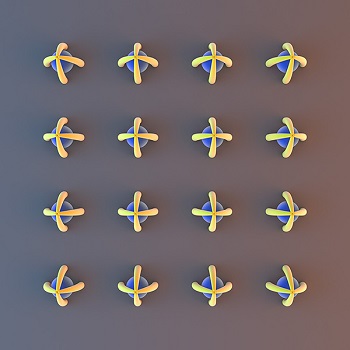May 19 2015
Researchers from Swinburne University of Technology and the University of Science and Technology of China have developed a low-cost technique that holds promise for a range of scientific and technological applications.

They have combined laser printing and capillary force to build complex, self-assembling microstructures using a technique called laser printing capillary-assisted self-assembly (LPCS).
This type of self-assembly is seen in nature, such as in gecko feet and the salvinia leaf and scientists have been trying to mimic these multi-functional structures for decades.
The researchers have found they can control capillary force – the tendency of a liquid to rise in narrow tubes or be drawn into small openings – by changing the surface structure of a material.
“Using laser printing techniques we can control the size, geometry, elasticity and distance between tiny pillars – narrower than the width of a human hair – to get the self-assembly that we want,” lead author of a study published in the prestigious Proceedings of the National Academy of Science , Swinburne’s Dr Yanlei Hu, said.
Ultrafast laser printing produces an array of vertical nanorods of varying heights. After the laser process, the material is washed in a development solvent using a method similar to traditional darkroom film processing. The gravity-governed capillary force difference creates pillars of unequal physical properties along different axes.
“A possible application of these structures is in on-chip micro-object trap-release systems which are in demand in chemical analysis and biomedical devices,” co-author Dr Ben Cumming said.
The researchers demonstrated the ability of the LPCS structures to selectively capture and release micro-particles.
“This hybrid strategy for preparing hierarchical structures features simplicity, scalability and high flexibility in comparison to other state-of the-art approaches such as photolithography, electron-beam lithography and template replicating,” Director of the Centre for Micro-Photonics at Swinburne, Professor Min Gu, said.
“Moreover, the assembled cells can be used as automatic micro-grippers for selective trapping and controllable releasing, suggesting many potential applications in the field of chemistry, biomedicine and micro-fluidic engineering.”
The paper Laser printing hierarchical structure with the aid of controlled capillary-driven self-assembly has been published in the Proceedings of the National Academy of Science.
The research was funded by the ARC Centre for Ultrahigh- and bandwidth Devices for Optical Systems, the Australian Research Council Laureate Fellowship program and the National Natural Science Foundation of China, the National Basic Research Program of China.